Grocery delivery apps have become a vital part of modern shopping, providing customers with the convenience of ordering essentials from the comfort of their own homes. With rising consumer demand and intense competition, the performance, reliability, and security of these apps define user trust.
A guide to grocery delivery app testing ensures smooth functionality, from browsing products and placing orders to secure payments and accurate delivery tracking. It helps identify issues like app crashes, slow load times, or incorrect inventory updates that can directly impact customer experience and retention.
Testing also validates integration with third-party services such as payment gateways, GPS tracking, and push notifications, ensuring that the entire ecosystem works seamlessly. A well-tested grocery delivery app drives customer loyalty and strengthens the brand’s competitive edge.
In this blog, we will explore why a grocery delivery app testing guide is important, the best tools, steps for testing, the role of AI, costs, and challenges, along with best practices to shape your app according to your customer satisfaction.
Key Takeaways
Thorough grocery delivery app testing is essential to ensure the app functions seamlessly across all platforms and features for high user retention.
Comprehensive testing involves functional, usability, performance, security, API integration, compatibility, and regression testing, utilizing a combination of manual and automated tools to cover all aspects of the app’s operation.
Real-world testing environments that simulate different devices, operating systems, network conditions, and peak load scenarios help uncover issues that might not appear in controlled settings, ensuring robustness in production.
Security testing is critical to protect sensitive customer data and payment transactions, requiring thorough vulnerability scanning and compliance validation with standards like PCI DSS and GDPR.
AI-enhanced testing improves efficiency by automating test case generation, prioritizing high-risk areas, enabling continuous learning, and performing advanced performance and visual validations.
Grocery delivery app testing costs USD 5,000 to USD 20,000+, depending on app complexity, to support scalable, high-quality growth.
Partnering with expert QA teams like JPLoft to use advanced testing frameworks boosts reliability and ensures a high-quality app experience.
All About Grocery Delivery App and Related Market Stats
A grocery delivery app is a digital platform that enables customers to order groceries online and have them delivered to their doorstep. It connects retailers, supermarkets, or local vendors with customers through a user-friendly interface, offering features like product search, shopping cart, multiple payment options, and real-time order tracking.
These grocery delivery apps save time, reduce in-store visits, and provide convenience, especially during busy schedules. Popular models of this sector include marketplace apps developed like Instacart and retailer apps like Walmart. Recently, quick commerce is holding on to a bigger consumer proportion of the delivery market, such as apps developed like Gopuff. With rising demand for speed and convenience, grocery delivery apps are revolutionizing how people shop for daily essentials.
Market Size and Growth Stats
Being one of the fastest-growing industries in the digital commerce landscape, it is heavily fueled by rising consumer demand for convenience, rapid urbanization, and technological advancements. Let's take a look at the current market statistics of the online grocery delivery app industry:
-
According to FutureMarketInsights, the online grocery delivery app market will be valued at over USD 401.8 billion in 2025, with expected growth to nearly USD 3.95 trillion by 2035, reflecting a robust CAGR of 25.1%.
-
It has been stated by Statista that over 2.2 billion global users are expected, with average revenue per user (ARPU) projected to amount to USD 548.49 in 2025.
-
Online grocery delivery sales reached a record USD 11.2 billion in August 2025 in the U.S., showing strong consumer reuse of delivery and ship-to-home channels, as estimated by DigitalCommerce360.
-
According to research by Mordor Intelligence, in the delivery sector, quick commerce is expected to grow at a 29.3% CAGR through 2030, while retail delivery held 68.23% of the online grocery delivery market share in 2024.
-
As per Statista, worldwide user penetration for grocery delivery apps stands at 13.3% in 2025, representing hundreds of millions of regular users in top markets like the US and Europe.
These figures highlight the scale, rapid growth, and competitive intensity of the grocery delivery app ecosystem of 2025. To understand why testing is a vital step in meeting market demands, let’s explore the core reasons why going through the guideline for grocery delivery app testing is indispensable for success.
Why is Testing a Grocery Delivery App Important?
Testing a grocery delivery app is vital to ensure reliability, smooth performance, and user satisfaction in an increasingly competitive market. Below are the key reasons why testing a grocery delivery app is important:
A] Ensures Seamless Functionality
Testing validates that all core grocery delivery app features, such as product browsing, cart management, checkout, payment processing, and delivery tracking, operate without glitches. A small error in any step can disrupt the customer journey and lead to lost sales.
B] Enhances User Experience
Creating an app for grocery delivery must be intuitive and responsive. Through usability and compatibility testing, developers confirm that the interface is easy to navigate across various devices, ensuring a positive customer experience.
C] Guarantees Secure Transactions
Since grocery delivery apps handle sensitive data like payment information and personal addresses, security testing is crucial. It identifies vulnerabilities and ensures compliance with data protection standards, earning customer trust.
D] Optimizes Performance and Scalability
Load and performance testing help determine how the app behaves during peak usage times, such as weekends or festive seasons. This process of grocery delivery App testing ensures systems can handle heavy traffic without crashes or delays.
E] Prevents Revenue Loss
Unstable apps with errors in orders or payments cause cancellations and refunds, leading to financial damage. Testing minimizes such risks by detecting issues before launch, thus preventing attacks on grocery delivery app revenue sources.
F] Builds Consumer Trust and Loyalty
A thoroughly tested app reinforces the brand’s reputation for reliability. When customers enjoy a hassle-free experience, they are more likely to return and recommend the service to others.
Grocery delivery app testing is not just about fixing bugs. It also ensures operational excellence, secures user data, and delivers a consistent experience after the development of grocery delivery app, which drives long-term business growth.
After understanding why testing is crucial to ensure the reliability, security, and user satisfaction of a grocery delivery app, the next important step is selecting the right testing tools. Let’s explore the best tools from the expert’s guide to grocery delivery app testing of 2025.
Best Tools to Use for Grocery Delivery App Testing in 2025
Testing a grocery delivery app requires a comprehensive set of tools to ensure functionality, performance, security, and usability across various devices. These tools streamline the process, reduce errors, and make testing more efficient. Here is a list of the best industry-level tools used in grocery delivery app testing:
|
Tool |
Purpose |
Best For |
|
Selenium |
Functional testing (web automation) |
Testing grocery web apps across different browsers |
|
Appium |
Functional testing (mobile) |
Validating iOS & Android app features like cart, checkout, and payments |
|
Katalon Studio |
End-to-end functional & API testing |
Automating workflows and ensuring smooth user journeys |
|
Apache JMeter |
Performance & load testing |
Checking stability during high-traffic grocery shopping hours |
|
TestComplete |
Functional + performance testing |
Reducing post-launch bugs with automated checks |
|
BrowserStack |
Compatibility testing |
Testing across multiple devices, OS versions, and screen sizes |
|
Sauce Labs |
Cloud-based compatibility testing |
Large-scale cross-browser and device testing |
|
Postman |
API testing |
Validating payments, order tracking, and inventory APIs |
|
SoapUI |
Advanced API testing |
Complex backend data exchange validation |
|
OWASP ZAP |
Security testing |
Detecting vulnerabilities, weak encryption, and unsafe logins |
|
Burp Suite |
Security & penetration testing |
In-depth security checks for sensitive data protection |
A mix of functional, performance, compatibility, API, and security testing tools ensures your grocery delivery app is fast, reliable, and secure. Following the grocery delivery app testing guide helps build customer trust and improve retention.
To effectively leverage the power of these best tools, it is essential to follow a structured testing process. The next section outlines the steps from the grocery delivery app testing guide to conduct app testing efficiently.
Steps to Conduct Grocery Delivery App Testing Effectively
Users expect a flawless experience, and any technical issue can negatively affect the business credibility of the grocery delivery app. Ensuring these apps run seamlessly requires a structured mobile app testing approach. Below are the steps to grocery delivery app testing:
Step 1: Understanding Business Requirements
The first step is to clearly understand the grocery delivery app trends, purpose, and workflows. Collaborate with stakeholders to identify:
-
Core functions such as product browsing, cart management, checkout, and delivery tracking.
-
Integration points like payment gateways, inventory systems, and APIs.
-
Target platforms (iOS, Android, web) and regions.
A clear understanding of these requirements helps testers design relevant test cases and prioritize critical scenarios.
Step 2: Create a Comprehensive Test Plan
A detailed test plan serves as the blueprint for the entire process. It should cover:
-
Scope of testing (functional, performance, security, usability).
-
Resources and tools (automation frameworks, devices, test environments).
-
Test cases and timelines aligned with development milestones.
-
Risk assessment to anticipate potential challenges.
This step of the grocery delivery app testing guide ensures all stakeholders are aligned and the QA team works strategically rather than reactively.
Step 3: Set Up the Test Environment
A realistic test environment simulates how users will interact with the app. Key considerations include:
-
Configuring real devices with different screen sizes, OS versions, and network conditions.
-
Setting up backend services such as APIs and databases.
-
Using tools like BrowserStack or Sauce Labs for device compatibility testing.
By replicating real-world conditions, teams can uncover issues that may not appear in controlled settings.
Step 4: Conduct Functional Testing
Functional testing validates that every feature works as intended. For a grocery app, this includes:
-
Account Management: Sign-up, login, and profile updates.
-
Product Search & Filters: Accuracy of search results and category navigation.
-
Cart Operations: Adding/removing products, applying coupons, and checking discounts.
-
Checkout & Payments: Testing multiple gateways, wallet options, and refund mechanisms.
-
Order Tracking: Real-time updates and delivery notifications.
Both manual and automated functional tests should be conducted to ensure no critical bug slips through.
Step 5: Perform Usability Testing
User experience is a deciding factor for retention. Usability testing helps evaluate:
-
Navigation flow: Is it intuitive for first-time users?
-
Design consistency: Do fonts, colors, and the grocery delivery app design remain uniform across screens?
-
Accessibility: Support for voice commands, screen readers, and language localization.
Inviting real users or beta testers can provide actionable feedback to refine the experience.
Step 6: Execute Performance and Load Testing
Grocery apps face traffic surges during weekends, holidays, or flash sales. Performance testing checks how the app handles:
-
Load capacity: Number of concurrent users supported without slowing down.
-
Response time: How fast the app loads pages or processes transactions.
-
Stress testing: Behavior under extreme conditions, such as double or triple traffic.
Tools like Apache JMeter and LoadRunner help simulate traffic spikes and identify bottlenecks before launch.
Step 7: Test API Integrations
Most grocery delivery apps rely heavily on APIs for payments, logistics, and inventory management. API testing ensures:
-
Data exchange between systems is fast, secure, and error-free.
-
Failover mechanisms exist if an API temporarily fails.
-
Responses are accurate and within acceptable timeframes.
Tools like Postman or SoapUI are widely used for validating API reliability and performance.
Step 8: Validate Security and Compliance
With sensitive data like addresses and payment information, security testing is non-negotiable. Important steps to grocery delivery app testing include:
-
Penetration Testing: Identifying loopholes hackers could exploit.
-
Data Encryption Validation: Ensuring sensitive details are encrypted end-to-end.
-
Compliance Checks: For example, PCI DSS compliance for payment processing.
-
Authentication Testing: Multi-factor login, password recovery, and role-based access.
Tools like OWASP ZAP and Burp Suite help in vulnerability assessments.
Step 9: Conduct Compatibility Testing
Customers use different devices, browsers, and networks. Compatibility testing verifies:
-
Smooth performance across iOS and Android versions.
-
Functionality across multiple browsers, such as Chrome, Safari, and Firefox.
-
Responsiveness of mobile app design across mobiles, tablets, and desktops.
Services like BrowserStack or real-device labs are valuable here.
Step 10: Carry Out Regression Testing
Each update or new feature risks breaking existing functionality. Regression testing ensures stability by:
-
Re-testing core features after updates.
-
Using automated test suites for faster execution.
-
Ensuring bug fixes don’t introduce new issues.
This step is essential for continuous app improvement. Partnering with an experienced mobile app development company in the UK could become a great help here.
Step 11: Beta Testing with Real Users
Before launch, release the app to a small group of users. Beta testing provides insights on:
-
Real-world usability.
-
Performance under different network conditions.
-
Unexpected bugs not captured during in-house testing.
Feedback gathered here helps polish the app for a smoother public launch.
To test an online grocery delivery app effectively is an ongoing process. By following structured steps, businesses can ensure their apps are functional, secure, and customer-friendly
By integrating AI-driven tools and techniques, testing efforts become more efficient, precise, and scalable, enabling faster detection of issues. So next, let’s dive into the specific ways AI is transforming the process of grocery delivery app testing.
How Can AI Enhance Grocery Delivery App Testing?
AI can significantly enhance how to test a grocery delivery app by simply improving the accuracy, efficiency, and coverage. This enables delivery businesses to maintain reliability and competitiveness in a demanding market. Here is a list of the key role of AI in grocery delivery app testing:
1. Automated Test Case Generation and Execution
AI algorithms can automatically generate comprehensive test cases based on app user behavior and patterns, ensuring broader test coverage with less manual effort. AI-driven testing bots can execute these cases continuously, detecting functional bugs quickly.
2. Predictive Analytics for Risk-Based Testing
AI analyzes past defects and user interaction data to predict high-risk areas when you build an AI app, allowing testers to prioritize critical functionalities. The ability to spot patterns enables teams to proactively prevent recurring bugs, reducing costly last-minute fixes.
3. Performance and Load Testing
Performance and load testing with realistic simulations. AI can simulate realistic traffic patterns, user loads, and delivery scenarios to assess app performance under peak conditions, ensuring scalability and stability.
4. Visual Testing and UI Validation
Visual recognition algorithms detect UI inconsistencies and layout shifts across devices and platforms, improving user experience. They also support multi-language and accessibility audits, helping ensure inclusivity for diverse customer bases.
5. Security Testing
AI helps identify vulnerabilities by scanning code and network traffic patterns for anomalies. Advanced threat modeling algorithms can detect unusual behaviors or potential fraud attempts faster than human analysis alone, avoiding any future mobile app security breaches.
6. Continuous Learning and Improvement
AI-driven systems evolve using feedback and previous test results, dynamically updating testing scripts as the app grows. Over time, this reduces manual workload while steadily improving quality, helping teams deliver robust apps consistently.
Integrating AI to test a grocery delivery app leads to faster releases, higher product quality, better user satisfaction, and reduced operational costs. In the next section, we will explore how the costs of grocery delivery app testing break down and what factors influence the budget needed to ensure a reliable, secure, and high-quality app.
Does grocery delivery App Testing Add Extra Cost? – A Quick Breakdown
Generally, testing of the grocery delivery apps costs between USD 5,000 to USD 15,000. The cost to test a grocery delivery app depends on multiple factors, such as features, complexity, platforms, and testing methods. Here’s a breakdown of the major cost components:
|
Type of Testing |
Description |
Estimated Cost in USD |
|
Functional Testing |
Ensures core features like search, cart, payments, and order tracking work properly. |
$1,000 – $3,000 |
|
Performance Testing |
Test the app under high load and traffic conditions. |
$1,500 – $4,000 |
|
Security Testing |
Validates data safety, payment security, and protection against breaches. |
$2,000 – $5,000 |
|
Usability Testing |
Focuses on user-friendliness, navigation, and experience. |
$1,000 – $2,500 |
|
Compatibility Testing |
Checks the app across multiple devices, screen sizes, and OS versions. |
$1,000 – $2,000 |
|
Regression Testing |
Ensures new updates don’t break existing features. |
$1,500 – $3,000 |
|
Automated Testing |
Adds efficiency but requires tool investments like Selenium or Appium. |
$500 – $2,000 (tools/licenses) |
Testing Cost Breakdown Based on App Complexity
► Basic Grocery App
Features: Basic limited features, single platform
Timeframe for Testing: 2 – 4 weeks
Estimated Cost in USD: $3,000 – $6,000
► Medium Complexity App
Features: Basic features with add-ons like multi-platform, real-time tracking, and multiple payment gateways.
Timeframe for Testing: 4 – 8 weeks
Estimated Cost in USD: $7,000 – $12,000
► Advanced App
Features: All features included, along with AI-based recommendations, subscription models, and loyalty programs
Timeframe for Testing: 8 – 12+ weeks
Estimated Cost in USD: $12,000 – $20,000+
While it may feel like a big upfront investment, it saves businesses from reputation loss and customer churn. Thorough testing ensures reliability, customer satisfaction, and reduced mobile app maintenance services costs post-launch. In order to guarantee a dependable, safe, and smooth grocery delivery app experience, let's examine the main challenges that need to be addressed.
Challenges to Overcome While Testing a Grocery Delivery App
Testing a grocery delivery app presents unique challenges that demand thorough planning, robust infrastructure, and ongoing vigilance. Below are the critical grocery delivery app development challenges faced during testing:
1. Real-Time Inventory Synchronization
Accurately syncing inventory across multiple stores and warehouses is complex, with frequent updates needed to prevent overselling, stockouts, and discrepancies. Real-time inventory bugs can disrupt the entire ordering flow and harm customer trust.
2. Handling Peak Loads and Scalability
Grocery apps must withstand major traffic spikes during promotions and holidays; failure to scale leads to crashes, delays, or transaction errors. Effective load testing is essential to ensure smooth performance under variable demand.
3. Integration of Multiple APIs
Integrating payment gateways, logistics services, and supplier APIs reliably is challenging. Failures or delays in external API responses can break checkout, order tracking, or delivery scheduling.
4. Real-Time Delivery Tracking
Ensuring accurate and seamless real-time GPS tracking is demanding, especially with fluctuating network conditions and multiple active deliveries. Bugs here can cause delivery errors and reduce customer satisfaction.
5. Security and Data Privacy
Testing must ensure robust protection for sensitive data and secure payments, meeting evolving compliance standards like GDPR or PCI-DSS. Unaddressed vulnerabilities can lead to breaches and reputational damage.
6. Payment System Reliability
Testing multiple payment options and transaction flows is complex; issues may arise around secure handling, currency conversions, or refunds. Regular audits and simulation of edge cases are required for a seamless checkout experience.
7. Usability Across Devices
With a vast range of user devices and operating systems, ensuring consistent UI/UX and functional integrity is a major challenge. Device labs and cloud testing platforms are essential for broad compatibility.
Overcoming these challenges demands strategic test design, automation, careful infrastructure choices, and continual improvement throughout an app’s lifecycle. The following section outlines key strategies and methodologies to enhance the testing process, ensuring your app delivers a reliable, secure, and seamless user experience.
Best Practices to Improve Grocery Delivery App Testing
Thorough grocery delivery app testing is vital for ensuring a grocery delivery app runs smoothly, securely, and efficiently. To improve testing and ensure robust, user-friendly applications, follow these best practices from the online grocery delivery app testing guide:
1. Prioritize Comprehensive Functional Testing
Test every core feature, including registration, product search, cart management, checkouts, payments, and order tracking, across all supported devices and platforms. This helps to catch issues early and ensures the app meets functional requirements.
2. Conduct Rigorous Performance and Load Testing
Simulate various scenarios such as high-traffic sales, fluctuating network conditions, and peak hour demand to identify and address bottlenecks, memory leaks, and slow response times before going live. This secures stable app behavior, even under stress.
3. Ensure Cross-Device and OS Compatibility
Run compatibility tests across a wide range of smartphones and tablets, as well as different operating system versions, screen sizes, and hardware configurations. This prevents user experience inconsistencies and functional gaps.
4. Implement Robust Security Testing
Test all data entry points, payment flows, and authentication mechanisms to block threats like data leaks, fraud, or unauthorized access. Use tools to check SSL certifications, session expiration, and compliance with data protection standards.
5. Focus on Real-Time Order and Delivery Tracking
Validate GPS accuracy, live order status updates, and seamless communication flows between users, drivers, and stores. Prompt, error-free updates to build user trust. Continuous monitoring of tracking data helps identify delivery inefficiencies and improve logistics.
6. Optimize for Usability and Accessibility
Perform usability testing to confirm intuitive navigation, readable design, and error-free voice control support. Validate the experience for accessibility by including features like large fonts, screen reader compatibility, and high-contrast modes.
7. Integrate Automated and Continuous Testing
Leverage automation tools for regression, performance, and visual validation. Set up continuous integration pipelines for rapid feedback and smoother releases, ensuring quick detection of issues after every update, reducing downtime.
By following these best practices from the guideline for grocery delivery app testing, businesses can ensure their grocery delivery apps are fast, secure, and customer-friendly, leading to higher retention and trust.
Choosing the Right Testing Partner—Why JPLoft Excels!
When it comes to grocery delivery apps, even the smallest glitch, whether it’s a failed payment, an inaccurate inventory update, or a delayed order notification, can cost you customers and revenue. That’s why choosing the right testing partner like JPLoft is crucial.
At JPLoft, we specialize in end-to-end grocery delivery app testing solutions. From functional and usability testing to performance, security, and API validation, our QA experts ensure your app works flawlessly under all conditions. We leverage advanced tools like Appium, Selenium, JMeter, and OWASP ZAP, combined with real-device testing, to deliver accurate, reliable results.
What sets us apart is our customer-first approach. We align with your business goals, simulate real-world scenarios, and provide actionable insights to enhance performance and user satisfaction. Whether you are a startup aiming for a quick launch or an enterprise scaling across multiple regions, JPLoft helps you minimize risks, improve efficiency, and launch with confidence.
With JPLoft, a dedicated grocery delivery app development company, as your testing partner, you can rest assured that your grocery delivery app will be secure, scalable, and user-friendly, ready to win customer trust from day one.
Conclusion
Building and launching a grocery delivery app is only halfway through the journey. Ensuring it works seamlessly is what truly drives success. With increasing competition, customer expectations for speed, security, and reliability are higher than ever.
Guide to grocery delivery app testing plays a crucial role in delivering a flawless user experience, from smooth navigation and real-time tracking to secure payments and performance under peak loads. By addressing challenges and following best practices, businesses can eliminate costly errors, boost retention, and build long-term trust.
Choosing an expert grocery delivery app testing team ensures your app is validated with advanced tools, real-world scenarios, and industry best practices. In today’s digital-first grocery landscape, a well-tested app is a necessity for survival and growth. Investing in comprehensive testing today sets the foundation for future customer loyalty, revenue growth, and a strong hold on the market.
FAQs
To test a grocery delivery app, validate core features like login, search, cart, checkout, and payments through functional testing. Conduct usability, performance, security, API, and compatibility checks using real devices, automation tools, and simulated peak traffic for reliable results.
Testing ensures the app functions smoothly, secures transactions, and provides a seamless user experience. It helps identify bugs early, improves performance under heavy traffic, and builds customer trust by delivering reliable and consistent results.
Key testing types include functional, usability, performance, compatibility, API, security, and regression testing. Each validates specific aspects of the app, ensuring it runs smoothly across devices while handling transactions, inventory, and high traffic effectively.
Costs vary based on complexity, platforms, and tools. On average, testing ranges between USD 5,000 and USD 20,000. Advanced apps with features like AI or subscriptions may require higher investments for comprehensive performance and security validation.
Popular tools include Selenium, Appium, Katalon Studio (functional), JMeter (performance), BrowserStack (compatibility), Postman (API), and OWASP ZAP (security). A mix of manual and automated tools ensures accurate, efficient, and reliable results during testing.





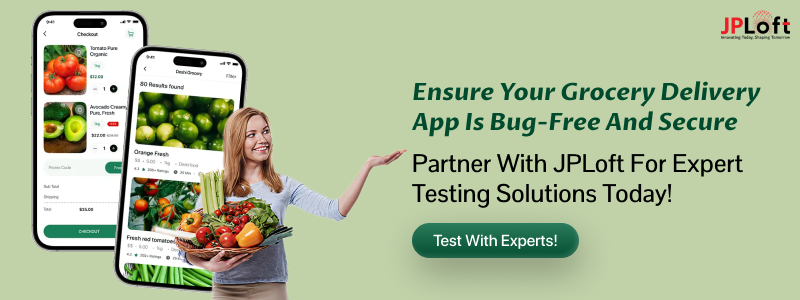
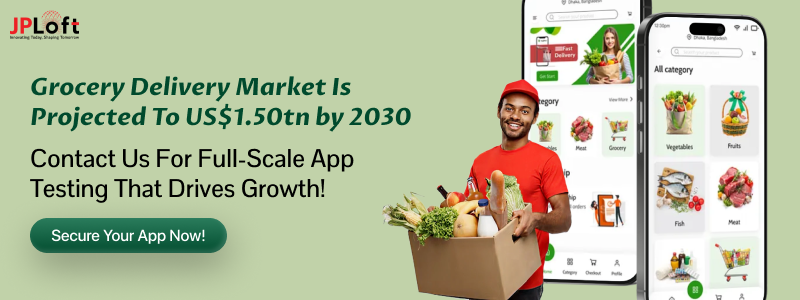

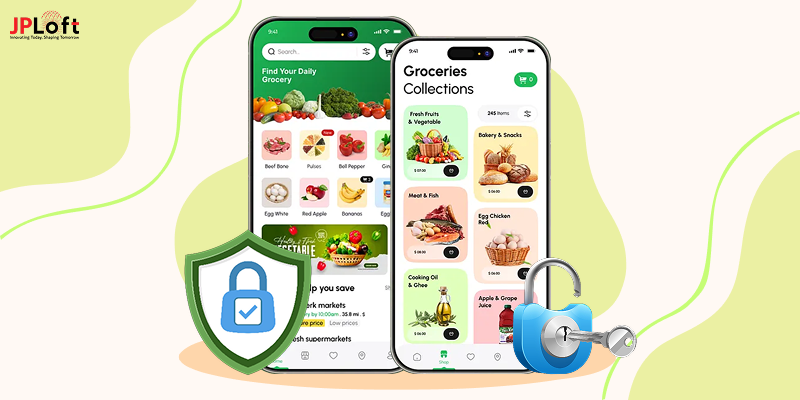
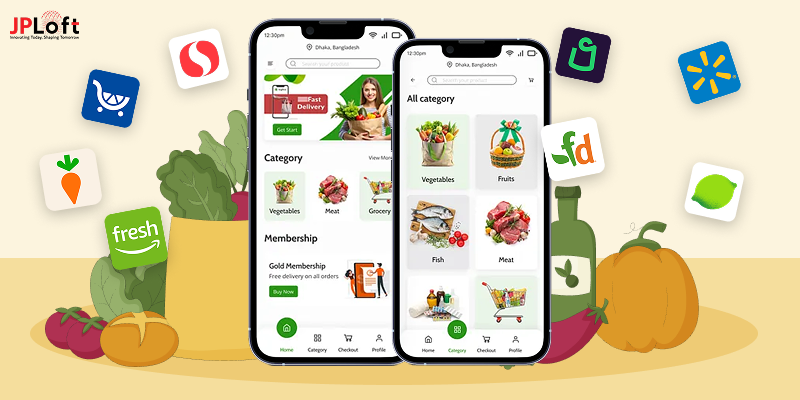
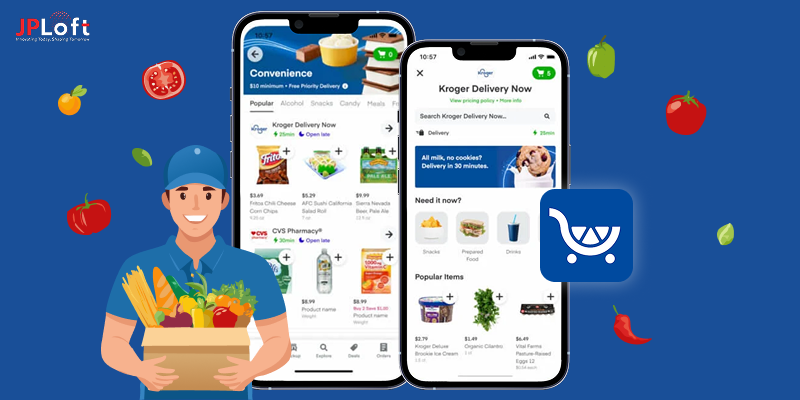


Share this blog